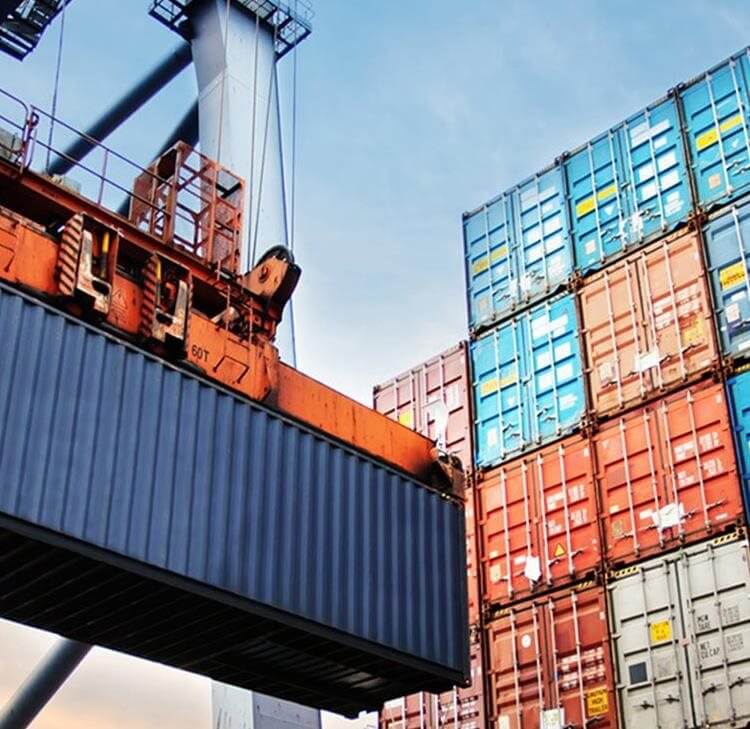President Trump’s announcement on 2 April 2025 of reciprocal tariffs targeting countries with a trade surplus with the US has caused turmoil across retail and supply chains.
The UK faces a 10% tariff, while the EU has a 20% tariff. Less than 24 hours after the steepest tariffs took effect, Trump granted a 90-day pause for the hardest-hit nations.
The UK government is seeking to negotiate down the tariffs, but for all countries except China, a 10% blanket duty on most US imports remains. The escalating tit-for-tat tariff war with China will add to uncertainty and costs for UK retailers exporting to the US. It will also expose UK retailers to a distorted UK market as cheap overseas goods, previously destined for the US find their way to UK consumers via DTC online market places, playing havoc with the market and increasing pressure on UK retailers. Uncertainty has also caused supply chain disruption, affecting the availability of certain products
Impact on retail
Fashion brands
The most heavily impacted retail sector is clothing and footwear. China is the largest clothing exporter to the US, and as a result those fashion brands which manufacture in China and have the US as a core market will be hit hard by the staggering 145% (at the time of writing!) tariff imposed by the US on Chinese-manufactured goods. Aside from China which has garnered most of the headlines, countries affected include those where much of the UK’s manufacturing taking place including Vietnam (46%), Bangladesh (37%), India (27%), and Turkey (10%). If tariffs remain at these levels, costs for those brands manufacturing in affected countries will rise exponentially and as a result, prices will need to rise and margins will be decimated, putting jobs and investment at risk. Brands with large manufacturing bases in China will now be revisiting their strategy, and revising their revenue and profit projections.
In recent years, many brands have invested in expanding their sales in the US given the strength of the US economy and challenges in other markets including Asia. However, all fashion brands will be impacted by the uncertainty and consequent damage to consumer confidence which comes on the back of several years of shocks and uncertainty.
Beauty brands
Whilst many beauty brands that manufacture their products in Korea, France and Italy will be breathing a sigh of relief at the 90-day pause in tariffs, there is still significant uncertainty as to whether a better deal can be negotiated by those countries (or the EU as a bloc) in that timescale. The uncertainty will therefore also hit beauty brands, as budgets are cut and brands look to share costs with suppliers and retailers.
Supermarkets
While supermarkets import/export little food directly from the US, they will be affected by the global inflationary pressures that tariffs will inevitably create.
Other retail sectors
Any brand which has a significant portion of their sales in the US or relies heavily on goods or components imported from China or other countries with high tariffs will be affected by the tariff regime.
Legal points to consider
Whilst the situation is unpredictable, we recommend brands review their supply, distribution, and manufacturing agreements and their arrangements with retailers as a matter of urgency. For example:
1. Will the brand be responsible for the rising tariffs?
Does the brand have orders to ship to the US on Incoterms (or other trade terms in supply agreements) which make the brand (the seller) responsible for tariffs? These should be identified urgently and the scale of the cost increase to the brand calculated.
2. Will US retailers and distributors seek to cancel orders?
US retailers and distributors may seek to cancel orders for products or renegotiate terms. Brands should review their contractual arrangements with key distribution and retail partners in the US and be ready to deal with such requests.
3. Can a brand add a “surcharge tariff” to wholesale contracts?
Many wholesale contracts fix prices or at the very least, the way in which prices are calculated. In older contracts, tariffs are unlikely to be addressed directly. Brands should check their price increase and force majeure clauses to understand if they have scope to pass on the tariffs.
4. Beware of price matching clauses
If the market is flooded with cheap overseas goods, price matching clauses could be disadvantageous. Brands should check whether their clauses allow comparison with DTC online platforms. Pure play brands may find it harder to address than those with a bricks and mortar offering.
5. Disputes
Brands should expect an increase in disputes with suppliers, distributors, agents and retailers as each party in the supply chain scrambles to reduce their exposure to the increased costs by cancelling orders, reneging on minimum purchase requirements and putting pressure on partners to share the losses.
Contents
- Navigating US tariffs: Practical guidance for global businesses
- How will US tariffs affect energy and infrastructure sectors in UK and Ireland?
- US tariffs: Implications for the food and drink sector in UK and Ireland
- US tariffs: Implications for the UK automotive sector
- US tariffs: Implications for the UK tech sector
Contact

Caroline Green
Senior Partner
caroline.green@brownejacobson.com
+44 (0)20 7337 1026
You may be interested in
Legal Update - Life sciences connect
How MHRA’s international reliance is shaping UK medicine regulation
Legal Update
Brexit reset: UK-EU SPS agreement breakthrough: September 2025 update
Legal Update
European Food Law Association (EFLA) Congress: Regulatory insights for the food and drink sector
Press Release
Browne Jacobson advises Nottingham's Orrsum as it joins global supply chain leader Li & Fung
Legal Update - Beyond Borders insights
Beyond Borders, Summer 2025
Legal Update
Are local authorities going to gain powers to charge fees for intervention?
Legal Update
Brexit reset deal: Implications for UK-EU food and drink trade
Legal Update
Distribution in the UK and the EU
Legal Update
The EU Deforestation Regulation: Implications and actions for the fashion industry
Press Release
UK-EU reset deal: Comments from Browne Jacobson experts
Press Release
US-UK trade deal: Reaction from Browne Jacobson lawyers
Legal Update
How will US tariffs affect energy and infrastructure sectors in UK and Ireland?
Legal Update
What new US tariffs mean for retail and supply chain
Legal Update
Navigating US tariffs: Practical guidance for global businesses
Legal Update
US tariffs: Implications for the UK automotive sector and practical steps for businesses
Legal Update
US tariffs: Implications for the food and drink sector in UK and Ireland and practical steps for businesses
Legal Update
US tariffs: Market chaos and implications for the UK tech sector
Legal Update - Beyond Borders insights
Beyond Borders, Spring 2025
Legal Update
Alcohol charity on the “Naughty List” for attempts to trade mark “DRY JANUARY”
Legal Update
Considering the growing trends of mindful drinking
Legal Update
DEFRA provides clarity around the GB wide 'Not for EU' labelling obligations
Legal Update - Beyond Borders insights
Beyond Borders, December 2024
Legal Update
The EU Cyber Resilience Act (CRA)
Legal Update
Navigating the waters of compliance: Understanding the Trade, Aircraft, and Shipping Sanctions (Civil Enforcement) Regulations 2024
Legal Update
Supreme Court re-instates injunction in Tesco fire and re-hire case
Legal Update
The future of food waste management in the UK: A guide for businesses
Opinion
Forced labour goods: a landmark decision
Press Release
Browne Jacobson contributes to report promoting greater UAE-UK collaboration in cancer care
Opinion
New hope for the manufacturing sector?
Legal Update
Navigating Oil Price Cap legislation: LMA issues revised Cargo and Hull wordings
Legal Update
The Home Affairs Committee launched another inquiry into fraud - Stop! Think Fraud
Legal Update
Veganism and manufacturing: Supply chain issues
Press Release
Browne Jacobson partner Jeanne Kelly elected President of the British Irish Chamber of Commerce
Published Article
Kick-starting the UK hydrogen economy
Published Article
What are freeports and what benefits could they offer?
Legal Update
Digital Markets Act and Data Platforms - FRANDs for life?
The Digital Markets Act (the “DMA”) joins the dots between competition law and data protection law and actively targets data-driven platforms. It is also a comprehensive regulation to take note of, with familiar GDPR-style fines tied to turnover.
Legal Update
The Omnibus Directive is almost here
Legal Update
New year, new Brexit transport rules
From 1st January, new import rules come into effect, with potential for significant delay, disruption and cost for importers and exporters.
Legal Update
REACH Registration post-Brexit
Although the UK’s departure from the EU means that the EU REACH regulation no longer applies, UK REACH has stepped in to fill the gap, and UK-based companies exporting to the EU are now facing two chemicals regulation frameworks to deal with when before there was just one. Is your company ready for the challenge?
Legal Update
Corporate finance update - May 2021
The Browne Jacobson corporate finance team continues to be a leading advisor, receiving recognition as the go-to advisor, for corporate M&A and private equity transactions.






































